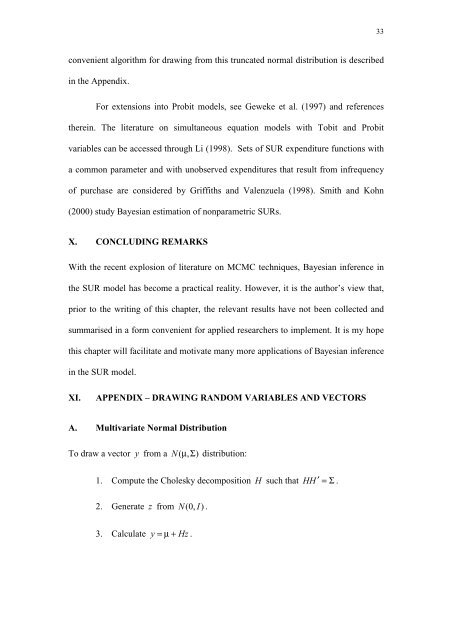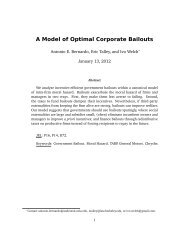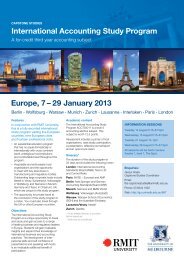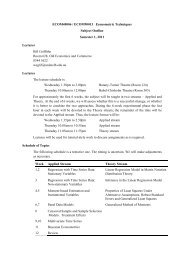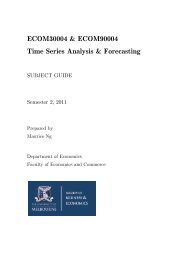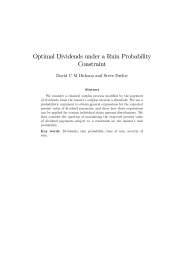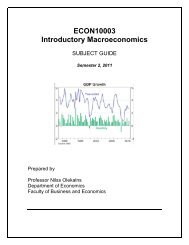Bayesian Inference in the Seemingly Unrelated Regressions Model
Bayesian Inference in the Seemingly Unrelated Regressions Model
Bayesian Inference in the Seemingly Unrelated Regressions Model
You also want an ePaper? Increase the reach of your titles
YUMPU automatically turns print PDFs into web optimized ePapers that Google loves.
33<br />
convenient algorithm for draw<strong>in</strong>g from this truncated normal distribution is described<br />
<strong>in</strong> <strong>the</strong> Appendix.<br />
For extensions <strong>in</strong>to Probit models, see Geweke et al. (1997) and references<br />
<strong>the</strong>re<strong>in</strong>. The literature on simultaneous equation models with Tobit and Probit<br />
variables can be accessed through Li (1998). Sets of SUR expenditure functions with<br />
a common parameter and with unobserved expenditures that result from <strong>in</strong>frequency<br />
of purchase are considered by Griffiths and Valenzuela (1998). Smith and Kohn<br />
(2000) study <strong>Bayesian</strong> estimation of nonparametric SURs.<br />
X. CONCLUDING REMARKS<br />
With <strong>the</strong> recent explosion of literature on MCMC techniques, <strong>Bayesian</strong> <strong>in</strong>ference <strong>in</strong><br />
<strong>the</strong> SUR model has become a practical reality. However, it is <strong>the</strong> author’s view that,<br />
prior to <strong>the</strong> writ<strong>in</strong>g of this chapter, <strong>the</strong> relevant results have not been collected and<br />
summarised <strong>in</strong> a form convenient for applied researchers to implement. It is my hope<br />
this chapter will facilitate and motivate many more applications of <strong>Bayesian</strong> <strong>in</strong>ference<br />
<strong>in</strong> <strong>the</strong> SUR model.<br />
XI.<br />
APPENDIX – DRAWING RANDOM VARIABLES AND VECTORS<br />
A. Multivariate Normal Distribution<br />
To draw a vector y from a N ( µ , Σ ) distribution:<br />
1. Compute <strong>the</strong> Cholesky decomposition H such that H H ′ = Σ .<br />
2. Generate z from N ( 0, I)<br />
.<br />
3. Calculate y = µ + Hz.


